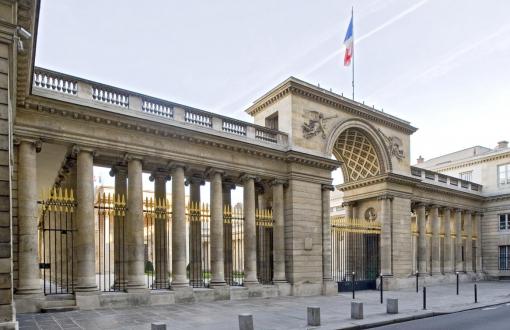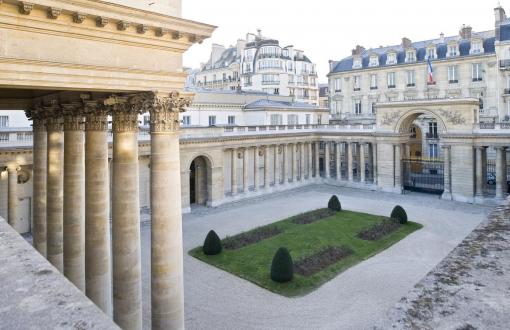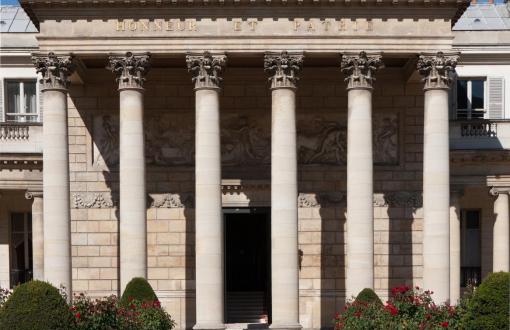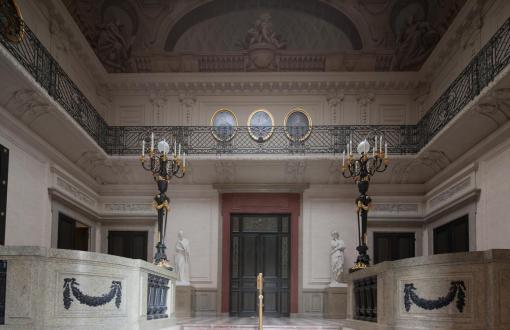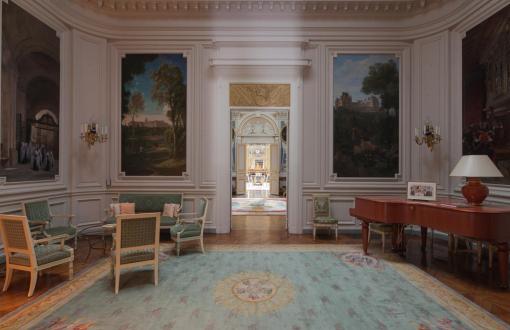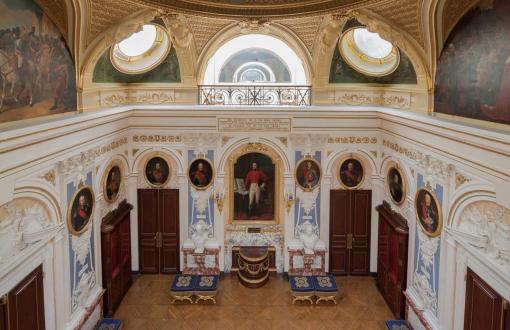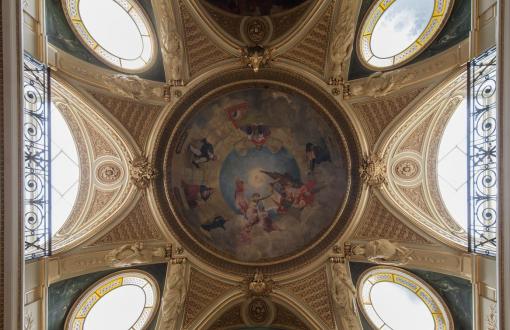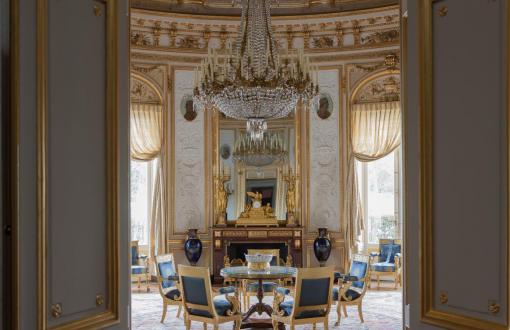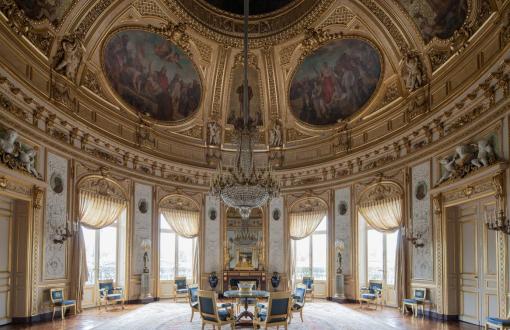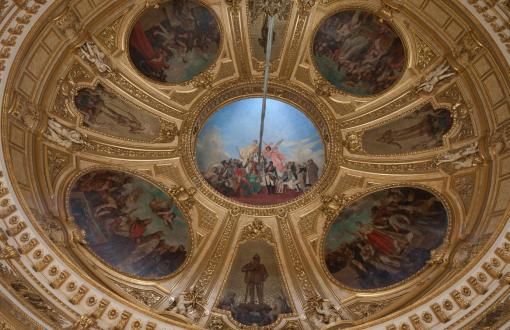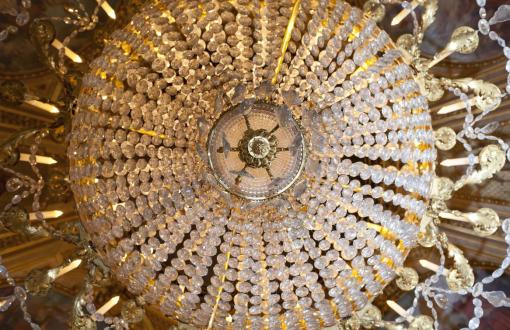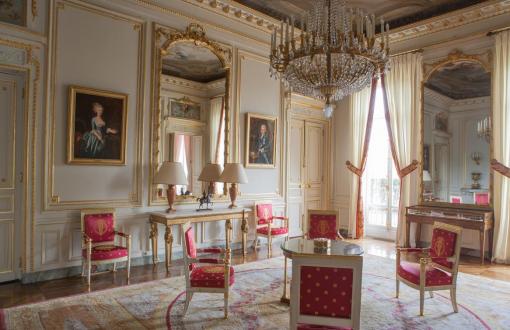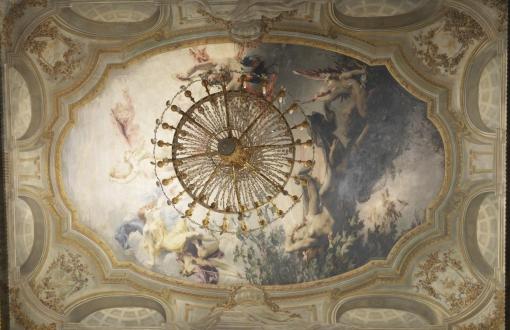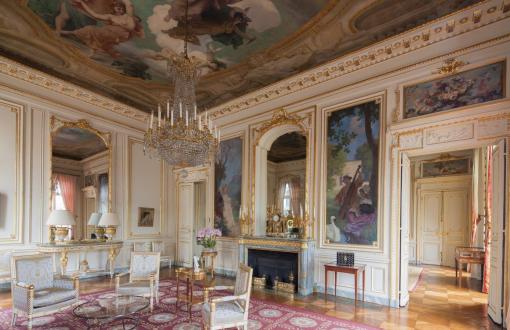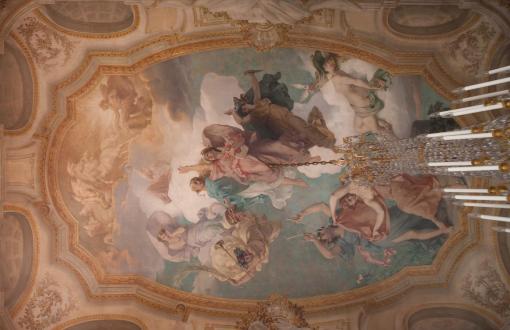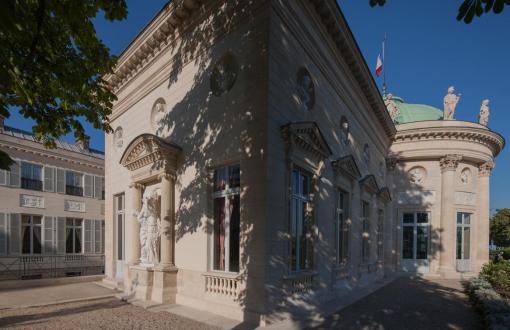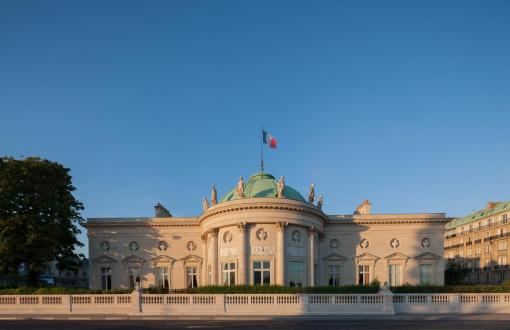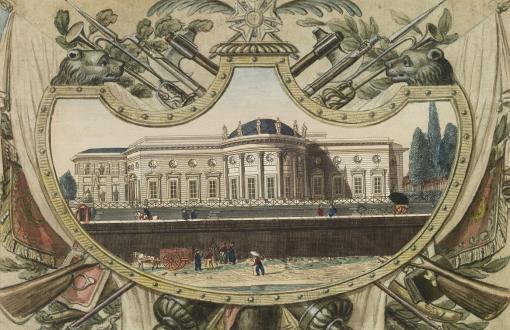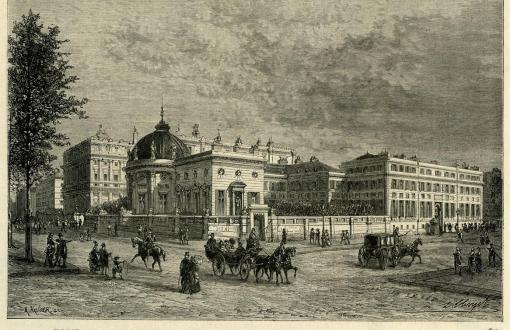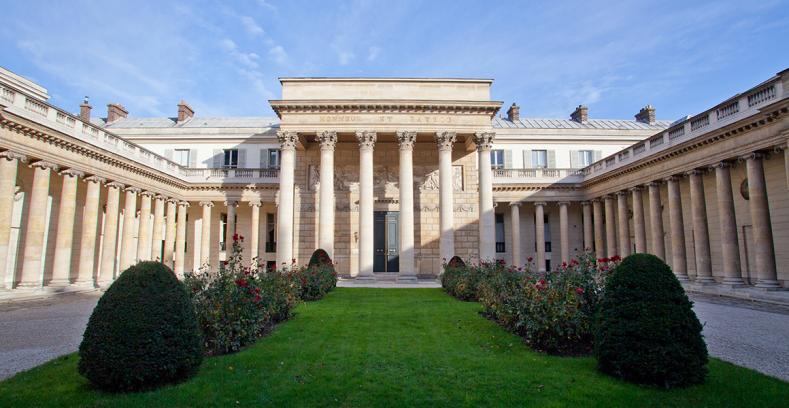
Hôtel de Salm, Palace of the Legion of Honor
The Hôtel de Salm has housed the seat of the Legion of Honor since 1804, when it was acquired by the Count de Lacépède, the first Grand Chancellor of the Order.
History
1787. Built by architect Pierre Rousseau for the German Prince Frederick III, Prince of Salm-Kyrburg, the Hôtel de Salm is found in the heart of Paris, facing the Tuileries Garden. Its early history was tumultuous.
1794. Upon the death of Prince of Salm at the guillotine, the hôtel particulier (private mansion) was removed from the list of national assets, under pressure from creditors.
There followed a long list of successive tenants and as many solutions to try and secure the financial stability of the monument.
1804. The Hôtel de Salm finally found a purpose that was fit for its elegance. It was acquired for the Legion of Honor by order of Napoleon Bonaparte.
The building was then renamed Palais de la Légion d’Honneur (Palace of the Legion of Honor).
1871. Devastated by a gigantic fire in the last days of the Paris Commune at the same time as the Tuileries Palace, as were the Cour des Comptes and the Hôtel de Ville, the palace rose from the ashes thanks to a public subscription launched among all recipients of the Legion of Honor and Military Medal.
1871-1878. The Grand Chancellor, General Vinoy, entrusted architect Anastase Mortier with the mission of reconstructing the palace.
The elegant façades had withstood the fire and were kept. The interior decoration was redesigned with the glory of the Legion of Honor in mind.
1925. The National Museum of the Legion of Honor and the Orders of Chivalry was founded in the wing of the former stables of the palace, entirely reworked for their new purpose.
1935. First restoration campaign launched by General Nollet.
1962. Restoration of the cour d’honneur (court of honor).
1985. The palace was listed as a historical monument.
2011-2017. The palace achieves an extensive restoration of the staterooms, facades and gardens, initiated by General Georgelin, Grand Chancellor.
Architecture
The Palace of the Legion of Honor offers visitors two facets: on one side, a refined rotunda façade with terraces opening onto the Seine across from the Tuileries Garden; on the other, a monumental triumphal arch in the classical style, and a double colonnade looking out onto the rue de Lille.
The architectural complex offers remarkable spaces:
- Cour d’honneur
Unchanged since its creation, the elegant rectangular cour d’honneur of Greco-Roman inspiration is exemplary in its orderly composition, the harmony of its proportions and the sobriety of its architecture. Its raised peristyle of 62 columns leads visitors to the palace’s entrance portico, topped with the inscription of the Legion of Honor’s motto, « Honneur et patrie » (Honor and Fatherland). A large bas-relief by Guillaume Moitte adorns the façade.
- Grand vestibule
Lit by a glass roof framed by a fresco painted in grisaille, since 1934 the vestibule has housed in its upper part the portraits of Grand Chancellors. Its lower part is adorned with a rich decor of green marble or porphyry stucco, and with sculptures by Taluet and Cavelier that mark the entrance to the series of staterooms.
- Stateroom of the Houses (Salon des maisons)
The walls of the Salon des maisons display beautiful paintings of daily scenes in the maisons d’éducation : Ecouen, Saint-Denis and les Loges. The ensemble is completed by a painting of the palace seen from the Quai Anatole France. The Salon des maisons announces the grand ceremonial staterooms.
- Grand Chancellors’ stateroom (salon des grands chanceliers)
Centrally located in the palace, the Salon des grands chanceliers (Grand Chancellors’ stateroom), one of the most prestigious, is where induction ceremonies are held, under an allegory of the Legion of Honor by Jean-Paul Laurens. Everything here is harmony and refinement: the walls’ subtle white and blue decor arranged around the portrait of the First Consul and the portraits of the Grand Chancellors, the mahogany doors, the engraved oculi by Paul Bitterlin and the griffins at the base of the cupola.
- Rotunda stateroom (Salon de la rotonde)
The Salon de la rotonde (Rotunda stateroom) retains its original architectural structure, its circular plan and all of its interior composition, as designed by Pierre Rousseau. Its openings offer broad views of the Seine, the Louvre and the Tuileries.
Its painted decor is composed of white and gold paneling that frames gilded motifs with white stucco.
Four oval paintings by Achille Sirouy depicting the great eras in French history alternate with portraits in grisaille on a golden background. A series of twelve profiles surrounds the stateroom, evoking the universality of the Legion of Honor.
The ensemble rises towards the cupola of the dome and the great composition painted by Théodore Maillot, representing Emperor Napoleon I and the leading civilian and military figures of the Empire.
- Stateroom of Dawn (Salon de l’aurore)
This bright stateroom with white and gold wainscoting is reminiscent of 18th-century decors. Its ceiling is adorned with a painting by Victor Ranvier depicting dawn.
- Stateroom of the Muses (Salon des muses)
This bright stateroom is decorated with panels representing the four seasons, painted by René-Xavier Prinet, and a ceiling depicting the muses, by François-Emile Ehrmann.
- Grand dining room
Located where the 18th-century mansion had a gallery, the dining room is striking with its opulent decor of dark paneling and marble. It boasts the spectacular Cérémonie du camp de Boulogne (after Philippe Hennequin), depicting the second induction ceremony of the Legion of Honor with Napoleon I.
As in all the staterooms of the palace, the bravura piece is the ceiling painting, Harmony by Emile Bin.
